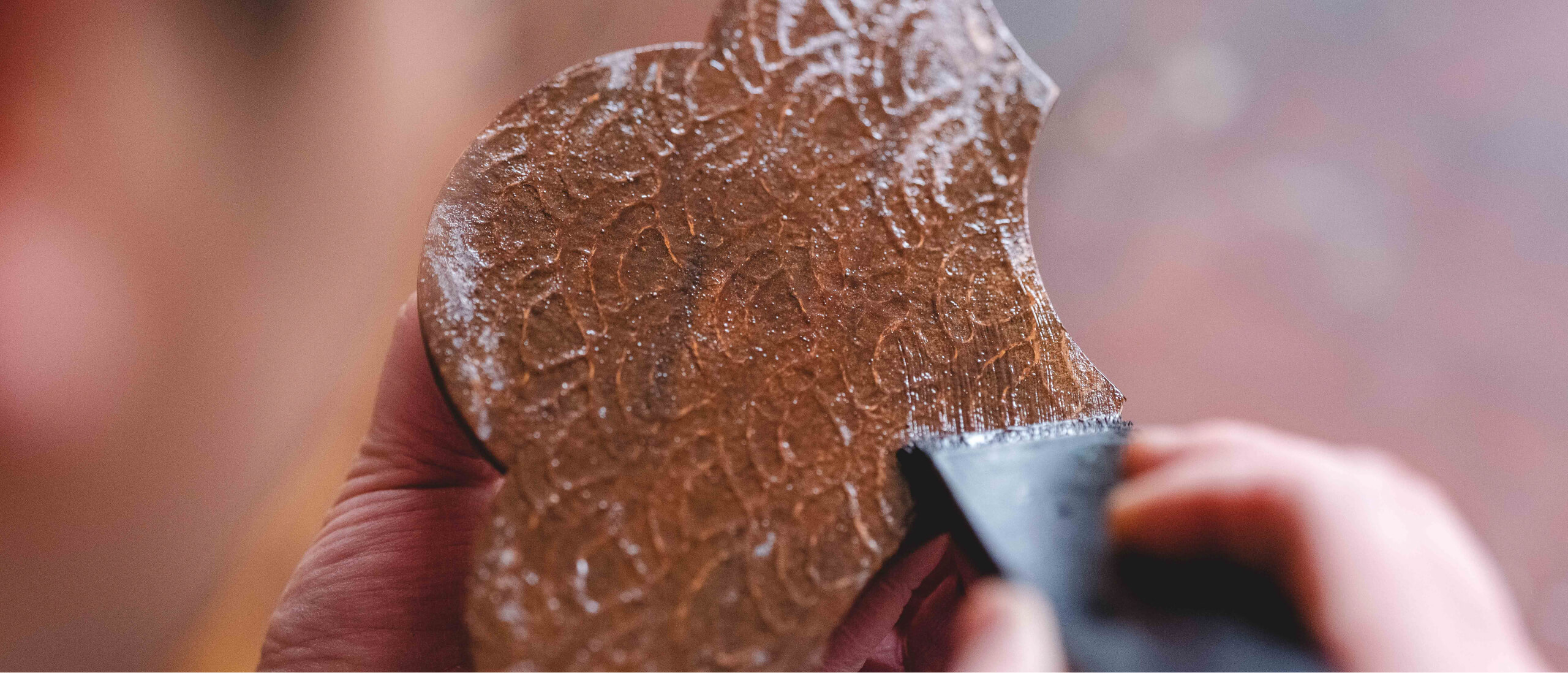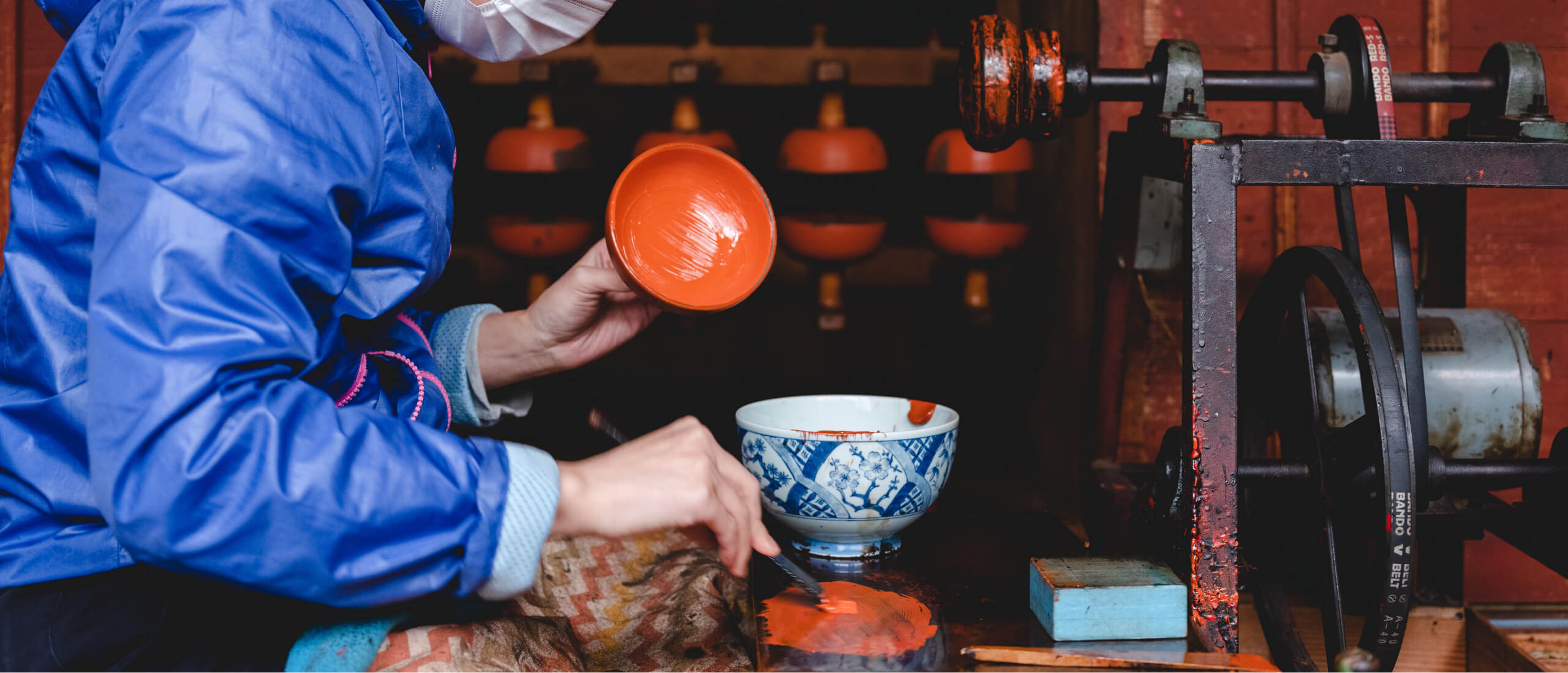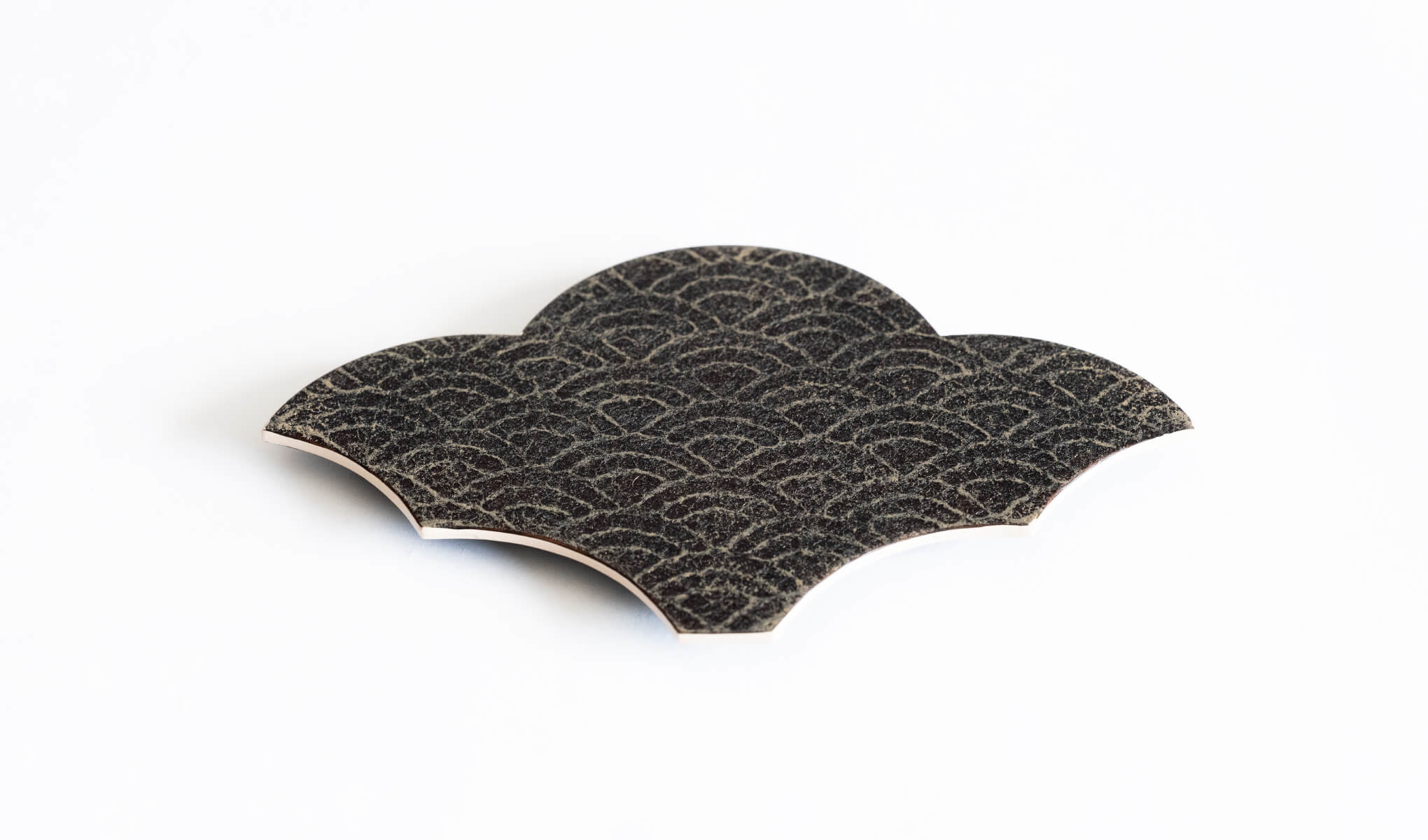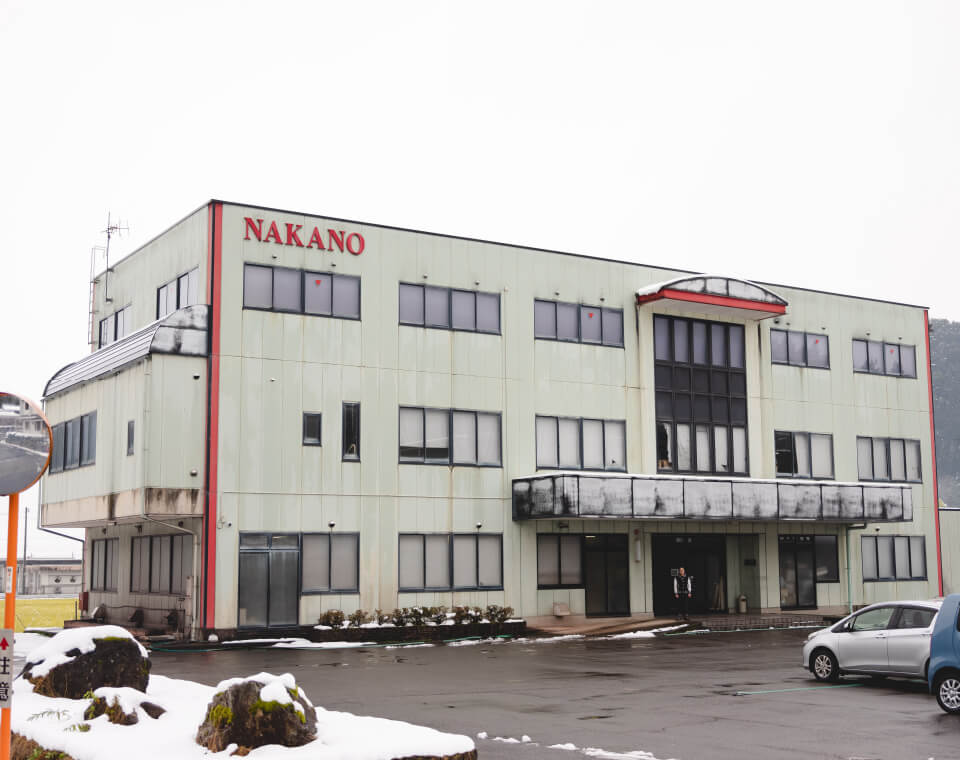MEMBER’S 06NakanoLacquering・Sales

Interview
Making use of techniques learned from making lacquer teaware
Their strong suits: ikkan-nuri and hakeme-nuri
Drawing from their experience with lacquer teaware, Nakano creates products that incorporate techniques traditionally used to make these objects that belong to the practice of sado (Japanese tea ceremony).
One of their specialties is ikkan-nuri, a lacquering technique in which washi is glued on a wooden base and lacquer is applied on top of it. This results in the texture of the paper coming alive, creating something that is light, strong, and has a unique luster.
In the world of sado, there exists the senke jisshoku, which refer to the artisan families that create utensils and tools favored by the main schools of tea ceremony in Japan. One of the traditional crafts used by them to create teaware include the ikkanbari, where layers of lacquer-glued washi paper are applied to the interior of a mold and coated with lacquer when removed from the mold. A master of this craft resides in the mountains of Ishikawa Prefecture, and one of Nakano’s craftsmen went there to train in order to learn the art of ikkan-nuri from him.
Another technique Nakano prides themselves on is hakeme-nuri. This is a technique that leaves the brush marks as is after painting, using lacquer that has increased viscosity by adding protein to it. Using hakeme-nuri results in a durable coating that makes scratches less visible, making it even possible to be washed and scrubbed hard. Often used for round objects such as bowls and small dishes, this traditional art is one that matches modern lifestyles.
In the future, Nakano would like to keep on creating techniques and products for new customers.
One of their specialties is ikkan-nuri, a lacquering technique in which washi is glued on a wooden base and lacquer is applied on top of it. This results in the texture of the paper coming alive, creating something that is light, strong, and has a unique luster.
In the world of sado, there exists the senke jisshoku, which refer to the artisan families that create utensils and tools favored by the main schools of tea ceremony in Japan. One of the traditional crafts used by them to create teaware include the ikkanbari, where layers of lacquer-glued washi paper are applied to the interior of a mold and coated with lacquer when removed from the mold. A master of this craft resides in the mountains of Ishikawa Prefecture, and one of Nakano’s craftsmen went there to train in order to learn the art of ikkan-nuri from him.
Another technique Nakano prides themselves on is hakeme-nuri. This is a technique that leaves the brush marks as is after painting, using lacquer that has increased viscosity by adding protein to it. Using hakeme-nuri results in a durable coating that makes scratches less visible, making it even possible to be washed and scrubbed hard. Often used for round objects such as bowls and small dishes, this traditional art is one that matches modern lifestyles.
In the future, Nakano would like to keep on creating techniques and products for new customers.
Both manufacturer and wholesaler, providing services from painting to sales
Operating for over ninety years, Nakano is a factory that mainly works with teaware as well as lacquerware – both commercial lacquerware and the traditional kind that uses natural urushi lacquer.
Because lacquerware in Echizen is made via division of labor, workshops that work with urethane paint and natural urushi are usually separated. However, at Nakano, both lacquer painting and urethane painting are done, and even sometimes the two approaches are combined together. By taking advantage of the characteristics of both coating methods, the factory is able to provide products that are very close to what customers imagine. Also, because the entire process is done in-house – from the base coats to the top coats, it is easy for them to respond in a nimble and flexible manner.
Nakano is also well versed in Japanese patterns and designs that have been used since ancient times. The tea utensils he works with are made by incorporating these traditional designs that have been used for centuries.
The secret to how Nakano wins the trust of customers is how they respond to customers in a friendly manner as well as how their products meet their needs. They are able to meet a wide range of requests – having expertise in both wooden and synthetic resin products, in addition to using urushi lacquer and urethane coating.
Because lacquerware in Echizen is made via division of labor, workshops that work with urethane paint and natural urushi are usually separated. However, at Nakano, both lacquer painting and urethane painting are done, and even sometimes the two approaches are combined together. By taking advantage of the characteristics of both coating methods, the factory is able to provide products that are very close to what customers imagine. Also, because the entire process is done in-house – from the base coats to the top coats, it is easy for them to respond in a nimble and flexible manner.
Nakano is also well versed in Japanese patterns and designs that have been used since ancient times. The tea utensils he works with are made by incorporating these traditional designs that have been used for centuries.
The secret to how Nakano wins the trust of customers is how they respond to customers in a friendly manner as well as how their products meet their needs. They are able to meet a wide range of requests – having expertise in both wooden and synthetic resin products, in addition to using urushi lacquer and urethane coating.

Product Spotlight

Ikkan-bari plate
Ikkan-bari is a traditional lacquering technique in which washi is glued on a wooden base and lacquer is applied on top of it. Using washi with Japanese patterns, Nakano’s style of ikkan-bari is characterized by the unique designs that meld with the texture of the washi. The plate can be used in a variety of ways, such as for serving sweets or as a tray for placing small items.
Company Information
-

-
Nakano Co.
CEO
Yoshiyuki Nakano Address
10-1-1 Azōdachō, Sabae, Fukui 916-1224 Tel
+81 778-65-0172 Contact
info@nakano-shikki.com Website
https://www.nakano-shikki.com/
